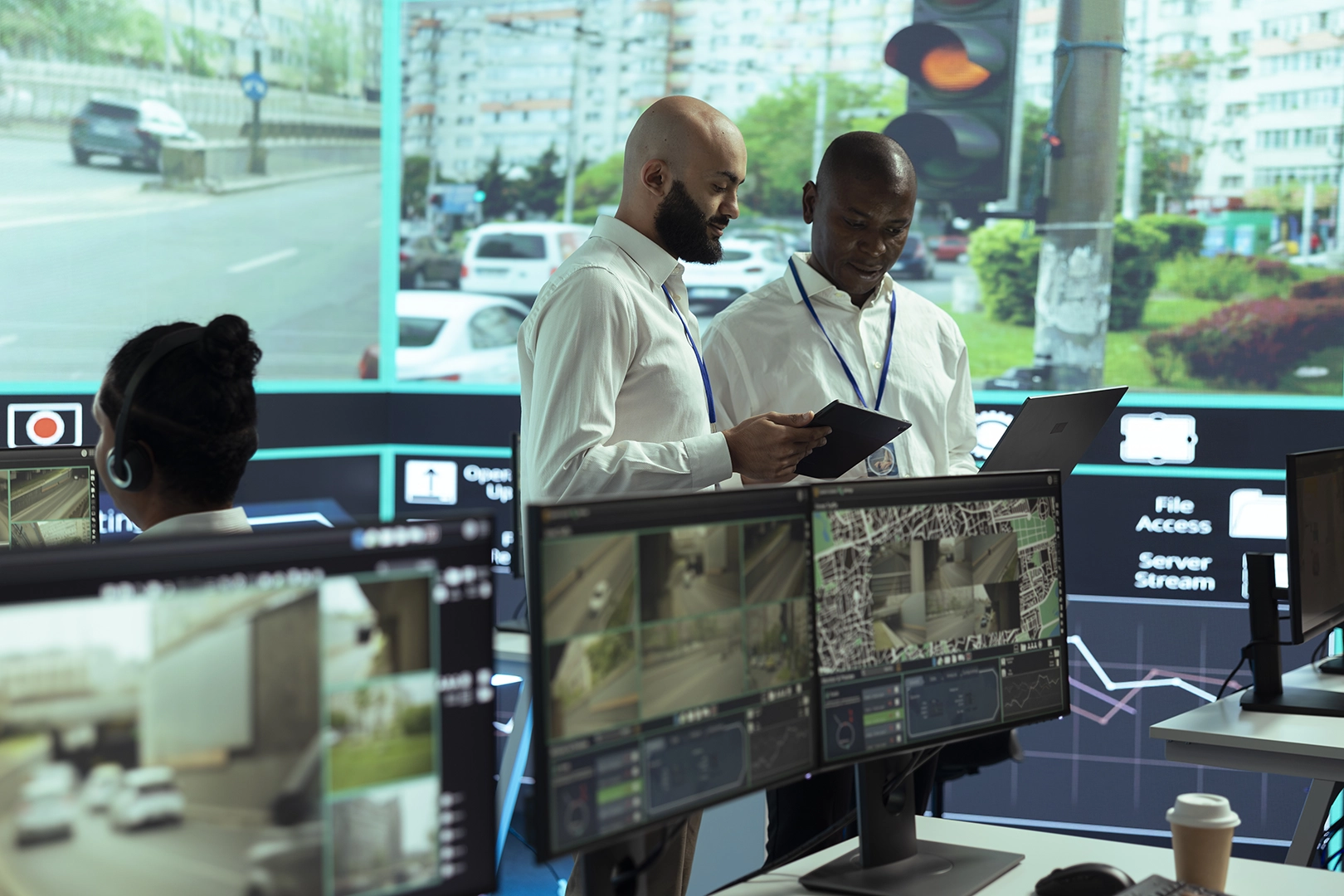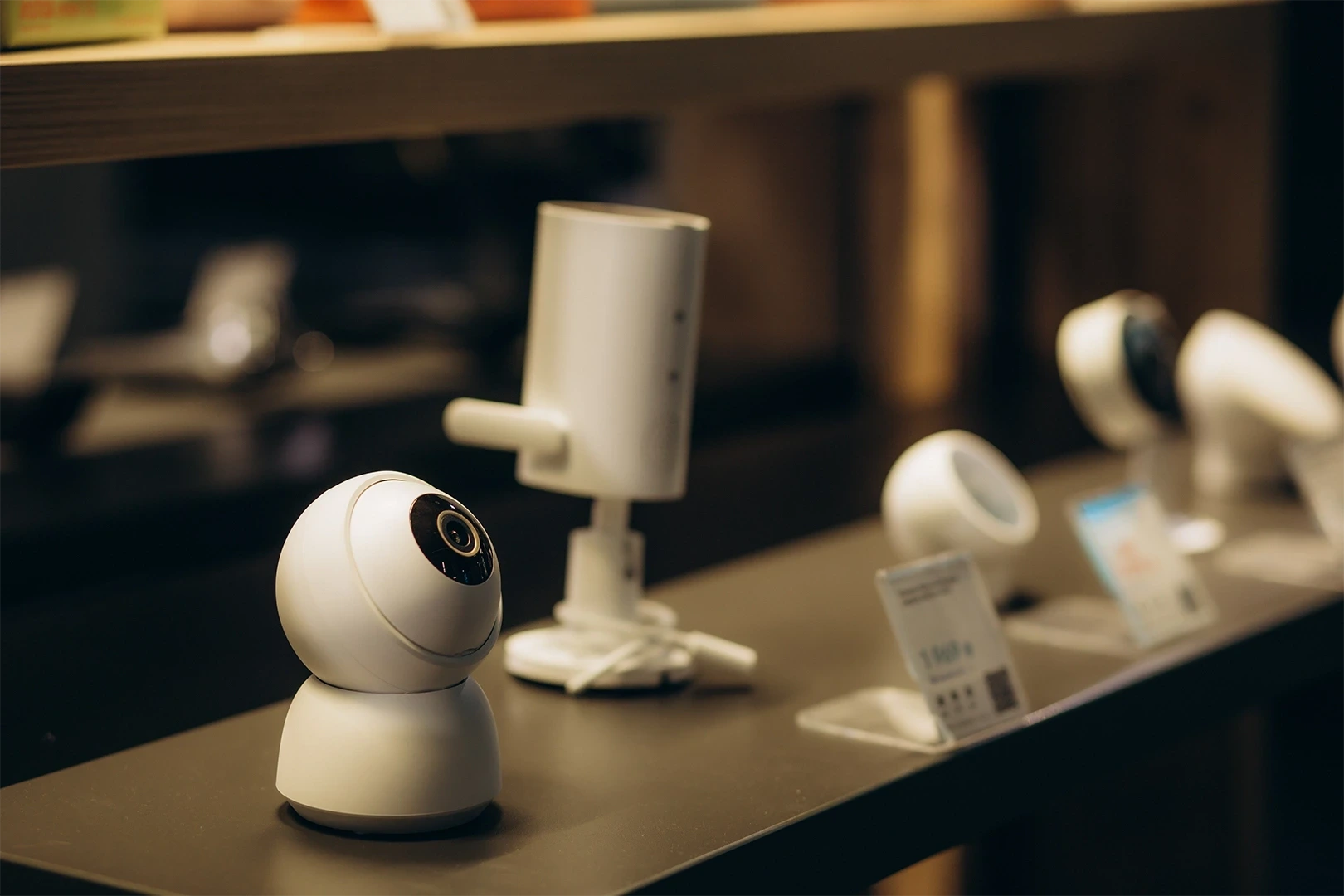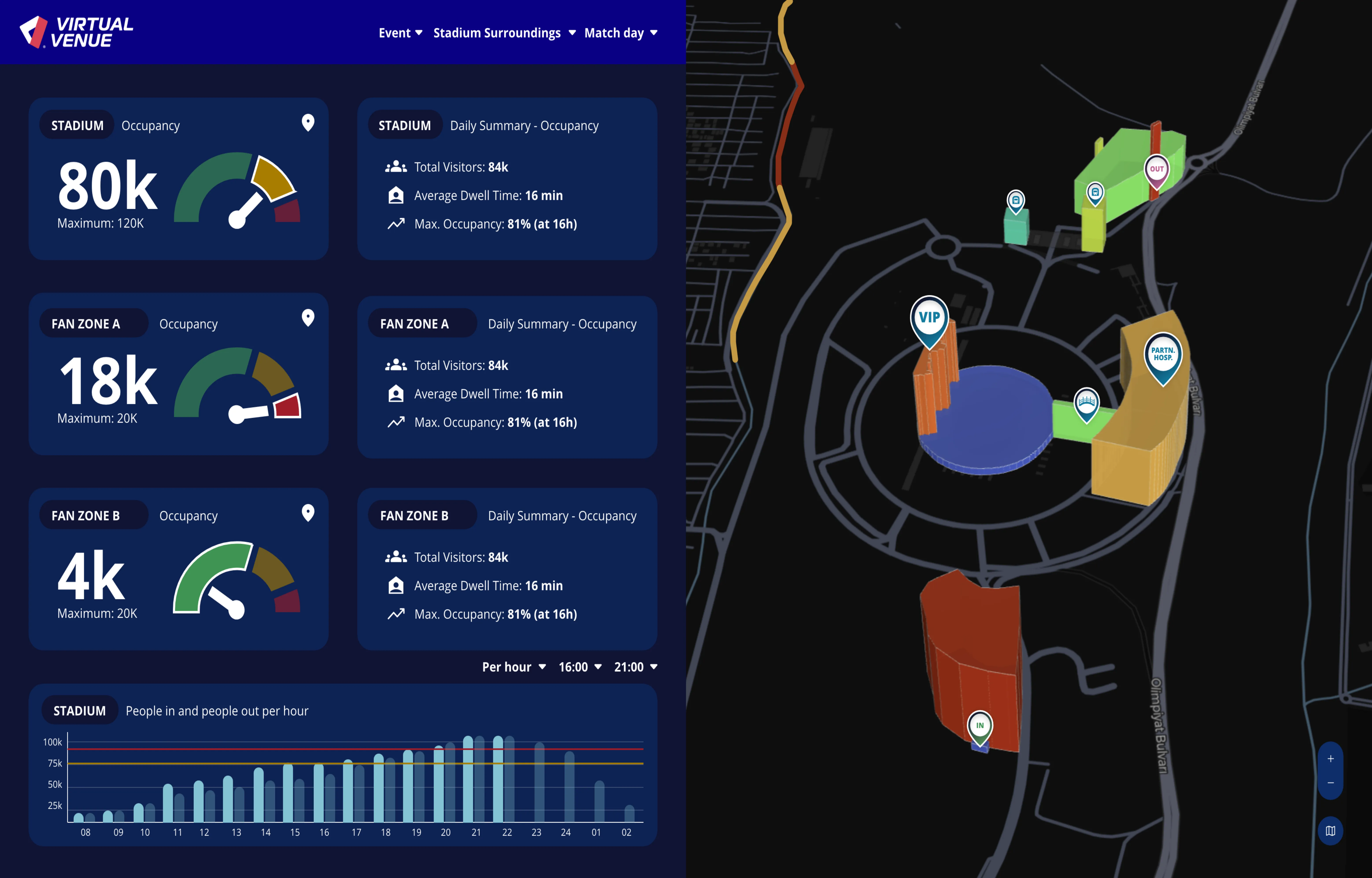How IoT Sensors Are Impacting Event Crowd Management

In the age of smart venues and fan experiences, Crowd Management is no longer just about security barriers and security staff with megaphones. It’s about real-time data, predictive analytics, and intelligent systems working in harmony. At the center of this transformation is one innovation: IoT sensors.
What is Crowd Management and How Can It Be Smarter?
Crowd Management is the strategic planning, oversight, and real-time coordination of large groups of people moving through a shared space, typically in venues such as stadiums, arenas, festivals, arenas, fanzones or transit hubs. It encompasses everything from guiding spectator flow and avoiding congestion to ensuring safety, comfort, and operational efficiency. Traditionally, Crowd Management has relied on manual oversight, with fixed infrastructure and trained personnel. However, as venues grow in scale and events grow in complexity, so do the risks and inefficiencies of conventional Crowd Management.
This is where IoT (Internet of Things) sensors come into play. By embedding intelligent devices throughout a venue, including motion sensors, pressure detectors, and bluetooth beacons, organizers can monitor crowd density, movement patterns, and environmental conditions in real-time.
This shift from passive observation to real-time data-driven in allows for faster decision-making. In short, IoT enables smarter Crowd Management: safer, more efficient, and cheaper too.
Why Traditional Crowd Management Isn’t Enough
1. Inability to Detect Risks in Real-Time
Conventional Crowd Management relies heavily on manual surveillance such as security staff stationed at specific points, CCTV systems monitored by human operators, and radio-based communication.
While these methods have served their purpose, they are inherently reactive. By the time a human observer notices abnormal crowding, or a bottleneck forms at an entry gate, it’s often too late to intervene. There's a significant delay between observation, reporting, decision-making, and response. This delay can escalate into real safety risks during emergencies.
In contrast, IoT sensors can instantly detect deviations in crowd flow, density, or behavior, and automatically trigger alerts to operations teams. This proactive model of risk detection is something traditional methods simply can’t replicate.
2. Poor Stakeholder Coordination
At large scale events, Crowd Management isn’t handled by a single entity. Managing an event like a Champions League final or a Coachella concert involves not only event organizers, but also the venue operators, local authorities, security teams, emergency services and public transportation.
Each stakeholder traditionally works with its own playbook, often not working together., which means information is communicated across different systems (email, radio, spreadsheets), and decisions can become delayed, duplicated, or contradictory.
For example, while a security team may identify overcrowding at Gate 3, the transport operations team may still be directing arriving attendees toward that zone from shuttle drop-off points or parking areas, unaware of the developing congestion. This disconnect is a coordination failure rooted in fragmented tools and communication protocols. Without a centralized, data-driven platform for sharing live insights such as Virtual Venue, stakeholders are forced to rely on delayed or partial information.

3. Lack of Scalability Across Multi-Venue Events
Traditional Crowd Management methods do not scale well. An approach that works for a 5,000 indoor event often crumbles under the pressure of a 60,000 seat stadium, let alone an event involving multiple venues across cities or countries.
This lack of scalability leads to uneven quality of crowd control. What works well in one location might not work in another. It also makes it harder to learn from event to event since insights are often not registered for posterity.
Platforms like Virtual Venue, when paired with IoT sensors, solve this by creating a consistent, replicable framework for Crowd Management, which scales from a single site to an international multi-venue site event seamlessly.
How IoT Sensors Work in Crowd Management
IoT sensors serve as the eyes and ears of an event, collecting real-time data that helps event organizers manage crowds more effectively. Placed throughout entry points, hallways, and public circulation areas, they provide critical insights that support faster, safer, and more coordinated crowd control decisions. IoT sensors can gather continuous data on:
Foot traffic flow (via motion, heat, or pressure sensors)
Sensors such as infrared motion detectors, video analytics cameras, and floor-embedded pressure sensors are used to track the movement and speed of people across different venue zones. This data is essential for understanding where crowds are forming, which corridors are becoming congested, and how people are circulating between entry gates, concession areas, and seating zones.
🔍 Example: During the Tokyo 2020 Olympic Games, facial recognition technology was used to enhance both security and public health safety. Self-driving electric shuttles circulating within the Villages were equipped with this technology to verify the identities of athletes, staff, and accredited media.
Beyond identity management, Japan’s telecom research institutes worked on AI-powered crowd control systemsm. This technology forecasts congestion patterns by modeling how individuals move through complex environments in real time. It used a combination of video feeds and mobile phone location data to anticipate bottlenecks and adjust crowd routing strategies.
Occupancy rates (RFID/Bluetooth-based trackers)
Bluetooth beacons and RFID tags, often embedded in wristbands, tickets, or smartphones, enable the system to calculate the number of people within a specific zone at any given time. This is particularly valuable for compliance with safety limits, managing restricted-access zones (VIP, media, locker rooms), or triggering alerts when thresholds are exceeded.
🔍 Example: Levi’s Stadium in California has integrated approximately 1,700 Bluetooth Low Energy (BLE) beacons throughout the venue to enhance both navigation and fan engagement. These beacons provide precise indoor positioning, allowing visitors to receive step-by-step directions to their seats or other key areas such as restrooms, concessions, and exits.
Additionally, the system supports proximity-based alerts, enabling real-time promotions from concession stands and other in-venue services.
Environmental cues (noise levels, temperature, air quality)
Beyond movement, IoT sensors can also measure ambient conditions like temperature, noise levels, humidity, and air quality. These cues are crucial for maintaining comfort and detecting early signs of risk. For instance, rising noise levels can indicate agitation in a crowd, while increased temperature may signal overcrowding in a confined indoor space.
🔍 Example: One notable example of noise-level monitoring as a proactive operational tool comes from Croke Park in Dublin, one of Europe’s largest stadiums with a capacity of over 82,000. As part of its commitment to being a responsible community partner, the stadium implemented this system to ensure compliance with Dublin City Council’s noise regulations during events. Instead of relying solely on third-party reports after the fact, organizers can now monitor decibel levels in real-time.
This shift empowers the operations team to respond immediately if sound levels approach regulatory thresholds, reducing the risk of complaints or penalties and helping to preserve the venue’s relationship with local residents.

Key Benefits of Crowd Management for Event Organizers
✅ Real-Time Monitoring
Anticipate overcrowding before it becomes a safety risk.
✅ Proactive Incident Management
Trigger alerts when crowd density exceeds safe thresholds.
✅ Optimized Resource Allocation
Deploy staff where they’re most needed, backed by data.
✅ Reduced Operational Costs
Eliminate unnecessary manual patrols and site visits.
✅ Better Fan Experience
Shorter queues, smoother entry/exit flow, more comfort.
How Virtual Venue approaches Crowd Management
Virtual Venue reimagines Crowd Management by turning event planning planning into a dynamic, data-driven process. Unlike traditional tools that rely on manual coordination and limited visibility, Virtual Venue integrates digital twin technology, real-time collaboration, and a map-centric approach to give event organizers full operational control over Crowd Management and safety.
At its core, Virtual Venue creates a shared digital representation of your venue. A virtual space where stakeholders from operations, security, transport, and media can coordinate and plan together. Crowd control zones, entry points, and sensitive areas are mapped and monitored as part of the event overlay. With a centralized view, all teams work from the same geographical reference, using consistent terminology and task assignments, which reduces the chance of miscommunication on the ground.
To support smarter crowd control, Virtual Venue integrates with third-party systems and IoT data via robust APIs. This enables the platform to ingest real-time inputs such as people-counting sensors, gate activity, or traffic control and display them directly on the venue map. Through this integration, teams can identify bottlenecks, adjust entry plans, or escalate action points with precision.
Furthermore, using modules like Site Visit Reporting and Incident Management, Virtual Venue enables continuous monitoring of high-traffic zones throughout the event lifecycle, from the first site visits to the venue handover moment. Any issue, such as excessive density at a concourse or an unstaffed gate, can be geo-tagged, assigned to a team, and tracked until resolution, all within the same platform.
By combining live spatial awareness, stakeholder collaboration, and a unified operational platform, Virtual Venue ensures that Crowd Management isn’t a reactive process.

How to Get Started in Smarter Crowd Monitoring
Transitioning to a smart, sensor-driven approach of Crowd Management is unfortunately not a plug-and-play upgrade. It requires a digital transformation, aligning technology, operations, and people under a unified data ecosystem. Here's how event organizers, stadium managers, and operations teams can methodically implement IoT to manage crowds with precision and agility.
1. Assess Existing Gaps in Data, Infrastructure, and Coordination
Before deploying new technology, conduct a thorough diagnostic of your current crowd management system. The objective is to identify:
- Blind spots in crowd monitoring (e.g., entry/exit chokepoints, tunnel transitions, concourse pinch zones);
- Response inefficiencies in current workflows (e.g., how long it takes to identify, escalate, and resolve a crowding issue);
- Data fragmentation (e.g., security logs, transport data, venue staff reports).
Use this phase to map out how decisions are made today, who makes them, what information they rely on, and where the bottlenecks are. This creates a blueprint for sensor placement and system integration later.
2. Design a Strategy for High-Risk and High-Density Zones
The next step is to strategically deploy IoT sensors based on data gathered from historical events, simulations, and event planning overlays. Focus on:
- Ingress/Egress points: Gates, turnstiles, parking exits, and transport drop zones;
- Circulation corridors: Main walking arteries between seating areas, food courts, or merchandise areas;
- Staging areas: VIP lounges, press rooms, mixed zones, and hospitality areas;
- Emergency routes and evacuation zones.
Make sure to select sensors based on the specific needs of your crowd management plan. For example, if you're monitoring outdoor entry zones, weather-resistant footfall counters or LIDAR sensors may be appropriate. If you need real-time occupancy updates in indoor hospitality zones, Bluetooth beacons or Wi-Fi tracking may offer more accurate insights.
The key is to match the sensor type to the zone’s function and data requirements. Not all areas require the same level of granularity or real-time precision.
3. Integrate IoT Data Streams with a Centralized Event Management System
Raw sensor data means little without context. The key to transformation is to visualize and act on the data in real time, using an operational platform like Virtual Venue that supports:
- Digital twin integration;
- Live dashboards and alerts;
- Role-based access for different stakeholder teams;
- Incident management tools (to raise, assign, and resolve crowd-related issues).
Your goal is to ensure the sensor network, data layers, and decision-making platform work as a synchronized ecosystem.
4. Train Teams to Interpret, React, and Optimize
The success of IoT in crowd management isn’t just about tech. It’s about people. Even the best data streams won’t lead to effective interventions unless operational teams know how to:
- Interpret density alerts in context;
- Communicate cross-functionally in real time;
- Follow predefined response protocols embedded in the platform;
- Escalate action points through the correct channels.
This means training should cover:
- Platform use: For security, ops, transport, ticketing, and media teams;
- Scenario-based drills: E.g., what to do when one zone exceeds 85% capacity;
- Post-event debriefs: Using historical data to refine future crowd management strategies.
5. Scale with Confidence Across Events and Venues
Once validated in a pilot event, organizers can seamlessly scale operations using Virtual Venue’s reusable templates and modular planning tools:
- Replicate successful sensor layouts across venues;
- Clone activity plans and incident workflows;
- Maintain consistent naming conventions and documentation;
- Adjust only for venue-specific differences (e.g., infrastructure, entry flows).
As venues grow smarter and fan expectations rise, Crowd Management must evolve from a reactive to proactive data-driven process. IoT sensors give event organizers the ability to monitor, predict, and respond to crowd behavior in real time. Combined with platforms like Virtual Venue, this technology empowers teams to collaborate more effectively, make informed decisions, and deliver smoother, safer experiences from entry to exit.
Let’s Talk About Your Crowd Management Strategy
Curious how other organizers are already using Virtual Venue and IoT data to transform their crowd control?
Book a call with our team and we’ll walk you through real-world use cases, share what’s worked for our clients and explore how a tailored crowd monitoring plan could fit your next event.






.svg)
.svg)
